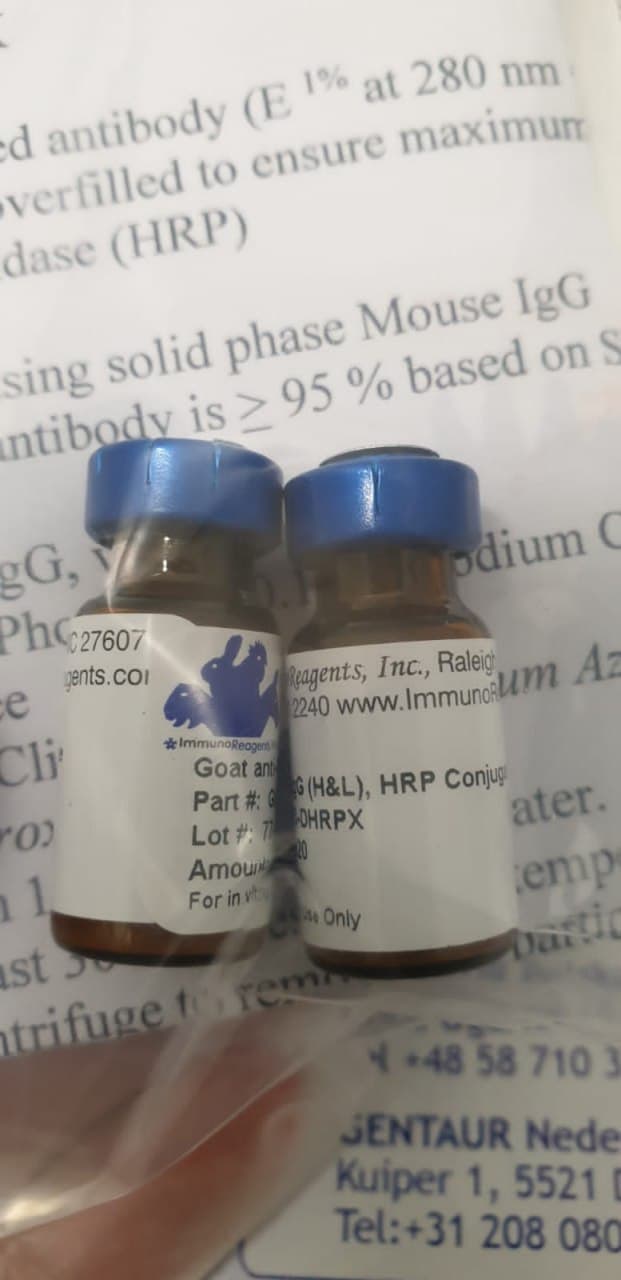Per determinare se la pressione sanguigna ambulatoriale è più predittiva dell’ipertrofia ventricolare sinistra rispetto alla pressione sanguigna occasionale nei bambini ipertesi, sono stati analizzati i dati ecocardiografici e della pressione sanguigna ambulatoriale di 37 bambini ipertesi non trattati. La massa ventricolare sinistra è stata calcolata utilizzando l’equazione di Devereux, l’indice di massa ventricolare sinistro è stato calcolato come massa ventricolare sinistra (in grammi) / altezza (2,7) (in metri) e l’ipertrofia ventricolare sinistra è stata definita come indice di massa ventricolare sinistro> 51 g / m (2.7).
Sono stati calcolati la pressione sanguigna media, il carico di pressione sanguigna e l’indice di pressione sanguigna (pressione sanguigna media divisa per la pressione sanguigna ambulatoriale pediatrica 95 ° percentile). L’indice di massa ventricolare sinistro era fortemente correlato con l’indice della pressione arteriosa sistolica nelle 24 ore (r = 0,43, P = 0,008) ed era anche correlato con la pressione arteriosa sistolica nelle 24 ore (r = 0,34, P = 0,037), sangue sistolico nelle 24 ore carico di pressione (r = 0,38, P = 0,020), carico di pressione sanguigna sistolica sveglia (r = 0,37, P = 0,025), pressione sanguigna sistolica del sonno (r = 0,33, P = 0,048) e carico di pressione sanguigna sistolica del sonno (r = 0,38, P = 0,021).
L’indice di massa ventricolare sinistro non era correlato all’età, al peso, alla pressione sanguigna clinica o alla pressione sanguigna diastolica ambulatoriale. La prevalenza complessiva dell’ipertrofia ventricolare sinistra è stata del 27%. La prevalenza dell’ipertrofia ventricolare sinistra era del 47% (8 su 17) nei pazienti con carico della pressione arteriosa sistolica> 50% e indice della pressione arteriosa sistolica nelle 24 ore> 1,0, rispetto al 10% (2 su 20) nei pazienti senza entrambi i criteri (P = 0,015). Questi dati suggeriscono che il monitoraggio ambulatoriale della pressione arteriosa può essere utile per la valutazione clinica dei bambini ipertesi, identificando quelli ad alto rischio per la presenza di lesioni d’organo.
Un sistema di punteggio clinico per la selezione dei pazienti per il test di mutazione PTEN viene proposto sulla base di uno studio prospettico di 3042 probandi.
La sindrome di Cowden (CS) e la sindrome di Bannayan-Riley-Ruvalcaba sono alleliche, definite da mutazioni germinali di PTEN e collettivamente denominate sindrome tumorale da amartoma PTEN. Ad oggi, non ci sono criteri esistenti basati su ampie coorti di pazienti potenziali per selezionare i pazienti per il test di mutazione PTEN. Per affrontare questi problemi, abbiamo condotto uno studio prospettico multicentrico in cui sono stati accumulati 3042 probandi che soddisfacevano i criteri clinici rilassati della CS. La scansione della mutazione PTEN, inclusa l’analisi del promotore e dell’ampia delezione, è stata eseguita per tutti i soggetti.
Mutazioni patogene sono state identificate in 290 individui (9,5%). Per valutare il fenotipo clinico e il genotipo PTEN rispetto all’espressione proteica, abbiamo eseguito immunoblotting (PTEN, P-AKT1, P-MAPK1 / 2) per un sottogruppo di pazienti (n = 423). Al fine di ottenere una stima personalizzata della probabilità pretest di mutazione germinale PTEN, abbiamo sviluppato un modello di pratica clinica ottimizzato per identificare pazienti adulti e pediatrici. Per gli adulti, un punteggio semiquantitativo, il punteggio della Cleveland Clinic (CC), ha prodotto una stima ben calibrata della probabilità pre-test dello stato di PTEN.
Nel complesso, la diminuzione dell’espressione della proteina PTEN è correlata con lo stato di mutazione PTEN; la diminuzione dell’espressione della proteina PTEN era correlata con l’aumento del punteggio CC (p <0,001), ma non con i criteri del National Comprehensive Cancer Network (NCCN) (p = 0,11). Per i pazienti pediatrici, abbiamo identificato criteri altamente sensibili per guidare i test di mutazione PTEN, con caratteristiche fenotipiche distinte dall’ambiente adulto. Il nostro modello ha migliorato la sensibilità e il valore predittivo positivo per la mutazione germinale PTEN rispetto ai criteri NCCN 2010 in entrambe le coorti.
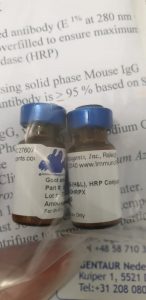
Utilizzo del trasferimento dei compiti per aumentare rapidamente i servizi di trattamento dell’HIV: esperienze da Lusaka, Zambia.
L’Organizzazione Mondiale della Sanità sostiene il trasferimento dei compiti, il processo di delega delle funzioni di assistenza clinica da operatori sanitari più specializzati a operatori sanitari meno specializzati, come strategia per raggiungere gli Obiettivi di Sviluppo del Millennio delle Nazioni Unite. Tuttavia, c’è una carenza di letteratura che descrive il trasferimento di compiti nell’Africa subsahariana, dove i servizi per la terapia antiretrovirale (ART) sono aumentati rapidamente di fronte a crisi generalizzate delle risorse umane. Nell’ambito dell’espansione dei servizi ART a Lusaka, Zambia, abbiamo implementato un programma completo di trasferimento delle attività tra i fornitori di servizi sanitari esistenti e i lavoratori della comunità.
La formazione inizia con sessioni didattiche mirate a set di abilità specializzate. Segue un periodo intensivo di tutoraggio pratico, in cui i fornitori vengono associati ai formatori prima di lavorare in modo indipendente. Forniamo una valutazione della qualità continua utilizzando indicatori chiave della qualità dell’assistenza clinica in ogni sito. Le prestazioni del programma vengono riviste trimestralmente con il personale della clinica. Quando vengono identificati i problemi, i membri del personale della clinica progettano e implementano interventi specifici per affrontare aree mirate.
 Single Donor Human Pediatric Plasma |
|
IPLASPED7101 |
Innovative research |
each |
EUR 253 |
|
|
|
Description: Single Donor Human Pediatric Plasma |
 Single Donor Human Pediatric Plasma |
|
IPLASPED7105 |
Innovative research |
each |
EUR 1176 |
|
|
|
Description: Single Donor Human Pediatric Plasma |
 Single Donor Human Pediatric SARS-Cov-2 Positive Plasma |
|
IPLASPEDCOV2P100UL |
Innovative research |
each |
EUR 127 |
|
|
|
Description: Single Donor Human Pediatric SARS-Cov-2 Positive Plasma |
 RealScreen Pediatric FSH ELISA Kit |
|
EL103-096 |
GenDepot |
96T |
EUR 2198.4 |
 Single Donor Human Pediatric Serum |
|
ISERSPED031 |
Innovative research |
each |
EUR 269 |
|
|
|
Description: Single Donor Human Pediatric Serum |
 Single Donor Human Pediatric Serum |
|
ISERSPED035 |
Innovative research |
each |
EUR 1268 |
|
|
|
Description: Single Donor Human Pediatric Serum |
 Single Donor Human Pediatric Serum |
|
ISERSPED11141 |
Innovative research |
each |
EUR 269 |
|
|
|
Description: Single Donor Human Pediatric Serum |
 Single Donor Human Pediatric Serum |
|
ISERSPED11145 |
Innovative research |
each |
EUR 1268 |
|
|
|
Description: Single Donor Human Pediatric Serum |
 Single Donor Human Pediatric Serum |
|
ISERSPED15171 |
Innovative research |
each |
EUR 269 |
|
|
|
Description: Single Donor Human Pediatric Serum |
 Single Donor Human Pediatric Serum |
|
ISERSPED15175 |
Innovative research |
each |
EUR 1268 |
|
|
|
Description: Single Donor Human Pediatric Serum |
 Single Donor Human Pediatric Serum |
|
ISERSPED460 |
Innovative research |
each |
EUR 269 |
|
|
|
Description: Single Donor Human Pediatric Serum |
 Single Donor Human Pediatric Serum |
|
ISERSPED465 |
Innovative research |
each |
EUR 1268 |
|
|
|
Description: Single Donor Human Pediatric Serum |
 Single Donor Human Pediatric Serum |
|
ISERSPED7101 |
Innovative research |
each |
EUR 269 |
|
|
|
Description: Single Donor Human Pediatric Serum |
 Single Donor Human Pediatric Serum |
|
ISERSPED7105 |
Innovative research |
each |
EUR 1268 |
|
|
|
Description: Single Donor Human Pediatric Serum |
 Single Donor Pediatric Human Urine |
|
IRHUSUREPED10131 |
Innovative research |
each |
EUR 322 |
|
|
|
Description: Single Donor Pediatric Human Urine |
 Single Donor Pediatric Human Urine |
|
IRHUSUREPED10135 |
Innovative research |
each |
EUR 1526 |
|
|
|
Description: Single Donor Pediatric Human Urine |
 Single Donor Pediatric Human Urine |
|
IRHUSUREPED141 |
Innovative research |
each |
EUR 322 |
|
|
|
Description: Single Donor Pediatric Human Urine |
 Single Donor Pediatric Human Urine |
|
IRHUSUREPED14171 |
Innovative research |
each |
EUR 322 |
|
|
|
Description: Single Donor Pediatric Human Urine |
 Single Donor Pediatric Human Urine |
|
IRHUSUREPED14175 |
Innovative research |
each |
EUR 1526 |
|
|
|
Description: Single Donor Pediatric Human Urine |
 Single Donor Pediatric Human Urine |
|
IRHUSUREPED145 |
Innovative research |
each |
EUR 1526 |
|
|
|
Description: Single Donor Pediatric Human Urine |
 Single Donor Pediatric Human Urine |
|
IRHUSUREPED591 |
Innovative research |
each |
EUR 322 |
|
|
|
Description: Single Donor Pediatric Human Urine |
 Single Donor Pediatric Human Urine |
|
IRHUSUREPED595 |
Innovative research |
each |
EUR 1526 |
|
|
|
Description: Single Donor Pediatric Human Urine |
 Single Donor Human Pediatric Saliva |
|
IRHUSSLPED10171 |
Innovative research |
each |
EUR 181 |
|
|
|
Description: Single Donor Human Pediatric Saliva |
 Single Donor Human Pediatric Saliva |
|
IRHUSSLPED10175 |
Innovative research |
each |
EUR 866 |
|
|
|
Description: Single Donor Human Pediatric Saliva |
 Single Donor Human Pediatric Saliva |
|
IRHUSSLPED391 |
Innovative research |
each |
EUR 181 |
|
|
|
Description: Single Donor Human Pediatric Saliva |
 Single Donor Human Pediatric Saliva |
|
IRHUSSLPED395 |
Innovative research |
each |
EUR 866 |
|
|
|
Description: Single Donor Human Pediatric Saliva |
 Recent Years Collection Samples. Multiple ovarian tumor tissue array |
|
OV401sur |
TissueArray |
each |
EUR 416 |
|
Description: Recent Years Collection Samples. Multiple ovarian tumor tissue array, including survival data, pathology grade, TNM and clinical stage (AJCC 8.0), 20 cases/40 cores (1.5mm) |
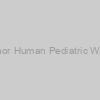 Single Donor Human Pediatric Whole Blood |
|
IWB1SPED031 |
Innovative research |
each |
EUR 322 |
|
|
|
Description: Single Donor Human Pediatric Whole Blood |
 Single Donor Human Pediatric Whole Blood |
|
IWB1SPED035 |
Innovative research |
each |
EUR 1453 |
|
|
|
Description: Single Donor Human Pediatric Whole Blood |
 Single Donor Human Pediatric Whole Blood |
|
IWB1SPED11141 |
Innovative research |
each |
EUR 322 |
|
|
|
Description: Single Donor Human Pediatric Whole Blood |
 Single Donor Human Pediatric Whole Blood |
|
IWB1SPED11145 |
Innovative research |
each |
EUR 1453 |
|
|
|
Description: Single Donor Human Pediatric Whole Blood |
 Single Donor Human Pediatric Whole Blood |
|
IWB1SPED15171 |
Innovative research |
each |
EUR 322 |
|
|
|
Description: Single Donor Human Pediatric Whole Blood |
 Single Donor Human Pediatric Whole Blood |
|
IWB1SPED15175 |
Innovative research |
each |
EUR 1453 |
|
|
|
Description: Single Donor Human Pediatric Whole Blood |
 Single Donor Human Pediatric Whole Blood |
|
IWB1SPED461 |
Innovative research |
each |
EUR 322 |
|
|
|
Description: Single Donor Human Pediatric Whole Blood |
 Single Donor Human Pediatric Whole Blood |
|
IWB1SPED465 |
Innovative research |
each |
EUR 1453 |
|
|
|
Description: Single Donor Human Pediatric Whole Blood |
 Single Donor Human Pediatric Whole Blood |
|
IWB1SPED7101 |
Innovative research |
each |
EUR 322 |
|
|
|
Description: Single Donor Human Pediatric Whole Blood |
 Single Donor Human Pediatric Whole Blood |
|
IWB1SPED7105 |
Innovative research |
each |
EUR 1453 |
|
|
|
Description: Single Donor Human Pediatric Whole Blood |
 Single Donor Human Pediatric Fecal Matter |
|
IRHUSFMPED03 |
Innovative research |
each |
EUR 536 |
|
|
|
Description: Single Donor Human Pediatric Fecal Matter |
 Single Donor Human Pediatric Fecal Matter |
|
IRHUSFMPED1114 |
Innovative research |
each |
EUR 536 |
|
|
|
Description: Single Donor Human Pediatric Fecal Matter |
 Single Donor Human Pediatric Fecal Matter |
|
IRHUSFMPED1517 |
Innovative research |
each |
EUR 536 |
|
|
|
Description: Single Donor Human Pediatric Fecal Matter |
 Single Donor Human Pediatric Fecal Matter |
|
IRHUSFMPED46 |
Innovative research |
each |
EUR 536 |
|
|
|
Description: Single Donor Human Pediatric Fecal Matter |
 Single Donor Human Pediatric Fecal Matter |
|
IRHUSFMPED710 |
Innovative research |
each |
EUR 536 |
|
|
|
Description: Single Donor Human Pediatric Fecal Matter |
 Human Pediatric Peripheral Blood Mononuclear Cells |
|
ABC-TC4351 |
AcceGen |
1 vial |
Ask for price |
|
|
|
Description: Included Diagnoses: Normal, Asthma, Crohn's Disease, IBD, Ulcerative Colitis, Type I Diabetes. |
 Single Donor Human Pediatric SARS-Cov-2 Positive Serum |
|
ISERSPEDCOV2P100UL |
Innovative research |
each |
EUR 127 |
|
|
|
Description: Single Donor Human Pediatric SARS-Cov-2 Positive Serum |
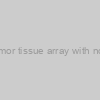 Pediatric malignant tumor tissue array with normal tissue as control |
|
PC701 |
TissueArray |
each |
EUR 306 |
|
Description: Pediatric malignant tumor tissue array with normal tissue as control, 70 cases/ 70 cores |
) Stomach cancer with matched adjacent normal tissue array (age<35 years old) |
|
ST8018 |
TissueArray |
each |
EUR 306 |
|
Description: Stomach cancer with matched adjacent normal tissue array (age<35 years old), including WHO grade, Borrmann grade and Lauren type, 40 cases/80 cores |
 with multiple IHC markers (PD-L1) Non-small cell lung cancer NSCLC tissue array (all samples are from recent 4 years) with multiple IHC markers (PD-L1 |
|
LC1461 |
TissueArray |
each |
EUR 552 |
|
Description: Non-small cell lung cancer NSCLC tissue array (all samples are from recent 4 years) with multiple IHC markers (PD-L1, ALK, ROS1+, CD70, HLA1, MPO, CD3 and CD8, containing stained intensity, location and cell type), including pathology grade, TNM and clinical stage, 73 cases/146 cores |
 2019-nCoV IgG/IgM RapiCard InstaTest for Whole Blood/Serum/Plasma samples |
|
GEN-176552-25tests |
Cusabio |
25 tests |
EUR 331.2 |
|
Description: A rapid test for detection of antibodies (IgG and IgM) for 2019-nCoV, the novel Coronavirus from the Wuhan strain. The test is easy to perform, takes 10 minutes to provide reliable results and is higly specific to the 2019-nCoV Coronavirus. |
 2019-nCoV IgG/IgM RapiCard InstaTest for Whole Blood/Serum/Plasma samples |
|
GEN-176552-50tests |
Cortez Diagnostic |
50 tests |
EUR 566.4 |
|
Description: A rapid test for detection of antibodies (IgG and IgM) for 2019-nCoV, the novel Coronavirus from the Wuhan strain. The test is easy to perform, takes 10 minutes to provide reliable results and is higly specific to the 2019-nCoV Coronavirus. |
 S-adenosylmethionine ELISA kit for plasma, serum, or tissue/cell homogenate samples |
|
IK00201s |
Arthus |
96 tests |
EUR 699 |
|
Description: S-adenosylmethionine ELISA kit for plasma, serum, or tissue/cell homogenate samples |
) Human IgG-RF stripper/Adsorbent (1 ml, sufficient for stripping 50 samples of 100 ul human serum/plasma) |
|
RFS-1 |
Alpha Diagnostics |
1 ml |
EUR 123.6 |
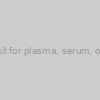 S-adenosylhomocysteine ELISA kit for plasma, serum, or tissue/cell homogenate samples |
|
IK00301s |
Arthus |
96 tests |
EUR 1349 |
|
Description: S-adenosylhomocysteine ELISA kit for plasma, serum, or tissue/cell homogenate samples |
 S-adenosylmethionine ELISA kit for plasma, serum, or tissue/cell homogenate samples, broad range |
|
IK00202s |
Arthus |
96 tests |
EUR 749 |
|
Description: S-adenosylmethionine ELISA kit for plasma, serum, or tissue/cell homogenate samples, broad range |
 S-adenosylmethionine ELISA kit for plasma, serum, or tissue/cell homogenate samples, broad range |
|
IK00203s |
Arthus |
48 tests |
EUR 449 |
|
Description: S-adenosylmethionine ELISA kit for plasma, serum, or tissue/cell homogenate samples, broad range |
 S-adenosylhomocysteine ELISA kit for plasma, serum, or tissue/cell homogenate samples, broad range |
|
IK00302s |
Arthus |
96 tests |
EUR 1399 |
|
Description: S-adenosylhomocysteine ELISA kit for plasma, serum, or tissue/cell homogenate samples, broad range |
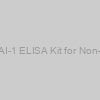 *Human Active PAI-1 ELISA Kit for Non-Plasma Samples |
|
IHUPAI1KTABF |
Innovative research |
each |
EUR 528 |
|
|
|
Description: *Human Active PAI-1 ELISA Kit for Non-Plasma Samples |
) Mini Samples ELISA Kit for Plasminogen Activator Inhibitor 1 (PAI1) |
|
MEA532Hu |
Cloud-Clone |
96Т |
EUR 598 |
|
|
) Plasma Sample Diluent (Antigen-Down SD) |
|
694 |
Immunochemistry |
100 mL |
EUR 57.25 |
) Plasma Sample Diluent (Antigen-Down SD) |
|
695 |
Immunochemistry |
500 mL |
EUR 227.5 |
-SD2) Plasma Sample Diluent (Antigen-Down)-SD2 |
|
KF17353 |
Neuromics |
500 ml |
EUR 338.4 |
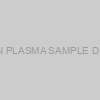 ANTIGEN DOWN PLASMA SAMPLE DILUENT Reagent |
|
GWB-Q00209 |
GenWay Biotech |
100 ml |
Ask for price |
 ANTIGEN DOWN PLASMA SAMPLE DILUENT Reagent |
|
GWB-Q00210 |
GenWay Biotech |
1000 ml |
Ask for price |
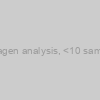 Collagen analysis, <10 samples |
|
80031 |
Chondrex |
Custom service |
EUR 174.84 |
|
Description: Collagen analysis |
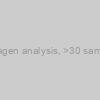 Collagen analysis, >30 samples |
|
80033 |
Chondrex |
Custom service |
EUR 162.66 |
|
Description: Collagen analysis |
 Collagenase assay, <10 samples |
|
80041 |
Chondrex |
Custom service |
EUR 155.7 |
|
Description: Collagenase assay |
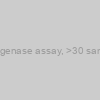 Collagenase assay, >30 samples |
|
80043 |
Chondrex |
Custom service |
EUR 143.52 |
|
Description: Collagenase assay |
) Mini Samples ELISA Kit for Galectin 3 (GAL3) |
|
MEA303Hu |
Cloud-Clone |
96Т |
EUR 756 |
|
|
) Mini Samples ELISA Kit for Caspase 3 (CASP3) |
|
MEA626Ra |
Cloud-Clone |
96Т |
EUR 821 |
|
|
) Mini Samples ELISA Kit for Cystin 1 (CYS1) |
|
MEJ301Hu |
Cloud-Clone |
96Т |
EUR 840 |
|
|
) Mini Samples ELISA Kit for Interleukin 3 (IL3) |
|
MEA076Hu |
Cloud-Clone |
96Т |
EUR 756 |
|
|
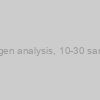 Collagen analysis, 10-30 samples |
|
80032 |
Chondrex |
Custom service |
EUR 169.62 |
|
Description: Collagen analysis |
 Collagenase assay, 10-30 samples |
|
80042 |
Chondrex |
Custom service |
EUR 150.48 |
|
Description: Collagenase assay |
 ELISA Kit) Mini Samples Mouse Interleukin 3 (IL3) ELISA Kit |
|
MEA076Mu-10x96wellstestplate |
Cloud-Clone |
10x96-wells test plate |
EUR 6290.41 |
|
|
|
Description: This is Double-antibody Sandwich Enzyme-linked immunosorbent assay for detection of Mini Samples Mouse Interleukin 3 (IL3). |
 ELISA Kit) Mini Samples Mouse Interleukin 3 (IL3) ELISA Kit |
|
MEA076Mu-1x48wellstestplate |
Cloud-Clone |
1x48-wells test plate |
EUR 623.21 |
|
|
|
Description: This is Double-antibody Sandwich Enzyme-linked immunosorbent assay for detection of Mini Samples Mouse Interleukin 3 (IL3). |
 ELISA Kit) Mini Samples Mouse Interleukin 3 (IL3) ELISA Kit |
|
MEA076Mu-1x96wellstestplate |
Cloud-Clone |
1x96-wells test plate |
EUR 838.87 |
|
|
|
Description: This is Double-antibody Sandwich Enzyme-linked immunosorbent assay for detection of Mini Samples Mouse Interleukin 3 (IL3). |
 ELISA Kit) Mini Samples Mouse Interleukin 3 (IL3) ELISA Kit |
|
MEA076Mu-5x96wellstestplate |
Cloud-Clone |
5x96-wells test plate |
EUR 3414.92 |
|
|
|
Description: This is Double-antibody Sandwich Enzyme-linked immunosorbent assay for detection of Mini Samples Mouse Interleukin 3 (IL3). |
 ELISA Kit) Mini Samples Mouse Interleukin 3 (IL3) ELISA Kit |
|
4-MEA076Mu |
Cloud-Clone |
-
Ask for price
-
Ask for price
-
Ask for price
|
- 10 plates of 96 wells
- 5 plates of 96 wells
- 1 plate of 96 wells
|
|
|
|
Description: Enzyme-linked immunosorbent assay based on the Double-antibody Sandwich method for detection of Mini Samples Mouse Interleukin 3 (IL3) in samples from n/a with no significant corss-reactivity with analogues from other species. |
) Mini Samples ELISA Kit for Nesfatin 1 (NES1) |
|
MEA242Mu |
Cloud-Clone |
96Т |
EUR 778 |
|
|
) Mini Samples ELISA Kit for Galectin 1 (GAL1) |
|
MEA321Hu |
Cloud-Clone |
96Т |
EUR 598 |
|
|
) Mini Samples ELISA Kit for Caspase 1 (CASP1) |
|
MEB592Mu |
Cloud-Clone |
96Т |
EUR 821 |
|
|
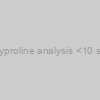 Hydroxyproline analysis <10 samples |
|
80061 |
Chondrex |
Custom service |
EUR 171.36 |
|
Description: Hydroxyproline analysis <10 samples |
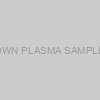 OOSA09671-1L - ANTIGEN DOWN PLASMA SAMPLE DILUENT Accessory Reagent |
|
OOSA09671-1L |
Aviva Systems Biology |
1000ml |
EUR 669 |
|
|
) Mini Samples ELISA Kit for Kisspeptin 1 (KISS1) |
|
MEC559Mu |
Cloud-Clone |
96Т |
EUR 864 |
|
|
 Peroxidase -POD- Activity Assay Kit -Plant samples- |
|
E-BC-K227-M-48T |
Elabscience Biotech |
48T |
EUR 16 |
|
|
|
Description: Enzyme Activity |
 Peroxidase -POD- Activity Assay Kit -Plant samples- |
|
E-BC-K227-M-96T |
Elabscience Biotech |
96T |
EUR 240 |
|
|
|
Description: Enzyme Activity |
 Peroxidase -POD- Activity Assay Kit -Plant samples- |
|
E-BC-K227-M-each |
Elabscience Biotech |
each |
Ask for price |
|
|
|
Description: Enzyme Activity |
 Peroxidase -POD- Activity Assay Kit -Plant Samples- |
|
E-BC-K227-S-100Assays |
Elabscience Biotech |
100 Assays |
EUR 220 |
|
|
|
Description: Enzyme Activity |
 Peroxidase -POD- Activity Assay Kit -Plant Samples- |
|
E-BC-K227-S-50Assays |
Elabscience Biotech |
50 Assays |
EUR 15 |
|
|
|
Description: Enzyme Activity |
 Peroxidase -POD- Activity Assay Kit -Plant Samples- |
|
E-BC-K227-S-each |
Elabscience Biotech |
each |
Ask for price |
|
|
|
Description: Enzyme Activity |
 For extracting HPV DNA from swab samples) AnaPrep HPV DNA Extraction Kit for swab samples (48) For extracting HPV DNA from swab samples |
|
Z1322007 |
Biochain |
1 kit (48 extractions) Including all required plastic disposables |
EUR 259 |
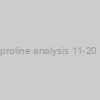 Hydroxyproline analysis 11-20 samples |
|
80062 |
Chondrex |
Custom service |
EUR 167.88 |
|
Description: Hydroxyproline analysis 11-20 samples |
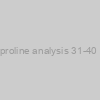 Hydroxyproline analysis 31-40 samples |
|
80064 |
Chondrex |
Custom service |
EUR 159.18 |
|
Description: Hydroxyproline analysis 31-40 samples |
) Control for Ckit, 6 samples (1.5mm) |
|
CKIT061 |
Pantomics |
1 |
EUR 102 |
|
Description: Gastrointestinal stroma tumors, 6 cores, 3 cases in duplicates showing strong, moderate and no expression of cKit molecule. |
 Antibody analysis - human >30 samples |
|
8005-3 |
Chondrex |
Custom service |
EUR 136.56 |
|
Description: Antibody analysis - human >30 samples |
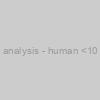 Antibody analysis - human <10 samples |
|
80051 |
Chondrex |
Custom service |
EUR 147 |
|
Description: Antibody analysis - human <10 samples |
) Mini Samples ELISA Kit for Sequestosome 1 (SQSTM1) |
|
MED198Hu |
Cloud-Clone |
96Т |
EUR 840 |
|
|
) Mini Samples ELISA Kit for Angiopoietin 1 (ANGPT1) |
|
MEA008Hu |
Cloud-Clone |
96Т |
EUR 598 |
|
|
) Mini Samples ELISA Kit for Pigment Epithelium Derived Factor (PEDF) |
|
MEB972Mu |
Cloud-Clone |
96Т |
EUR 821 |
|
|
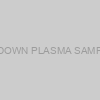 OOSA11219-100ML - ANTIGEN DOWN PLASMA SAMPLE DILUENT Accessory Reagent |
|
OOSA11219-100ML |
Aviva Systems Biology |
100ml |
EUR 169 |
|
|
 IFN alpha Serum Samples ELISA Kit |
|
55R-PB41110 |
Fitzgerald |
1 kit |
EUR 947 |
|
Description: ELISA IFN Alpha Serum Samples for use in the research laboratory |
 Total Phenols Colorimetric Assay Kit -Plant samples- |
|
E-BC-K354-M-500Assays |
Elabscience Biotech |
500 Assays |
EUR 720 |
|
|
|
Description: Quantitative |
 Total Phenols Colorimetric Assay Kit -Plant samples- |
|
E-BC-K354-M-96T |
Elabscience Biotech |
96T |
EUR 24 |
|
|
|
Description: Quantitative |
 Total Phenols Colorimetric Assay Kit -Plant samples- |
|
E-BC-K354-M-each |
Elabscience Biotech |
each |
Ask for price |
|
|
|
Description: Quantitative |
 Total Phenols Colorimetric Assay Kit -Plant Samples- |
|
E-BC-K354-S-100Assays |
Elabscience Biotech |
100Assays |
EUR 22 |
|
|
|
Description: Quantitative |
 Total Phenols Colorimetric Assay Kit -Plant Samples- |
|
E-BC-K354-S-200Assays |
Elabscience Biotech |
200Assays |
EUR 350 |
|
|
|
Description: Quantitative |
 Total Phenols Colorimetric Assay Kit -Plant Samples- |
|
E-BC-K354-S-each |
Elabscience Biotech |
each |
Ask for price |
|
|
|
Description: Quantitative |
 Antibody analysis - human 10-30 samples |
|
8005-2 |
Chondrex |
Custom service |
EUR 140.04 |
|
Description: Antibody analysis - human 10-30 samples |
 Mini Samples ELISA Kit for Asprosin |
|
MEA332Hu |
Cloud-Clone |
96Т |
EUR 756 |
|
|
 Mini Samples ELISA Kit for Asprosin |
|
MEA332Mu |
Cloud-Clone |
96Т |
EUR 778 |
|
|
 ELISA Kit) Mini Samples Mouse Interferon Alpha 3 (IFNa3) ELISA Kit |
|
MES761Mu-10x96wellstestplate |
Cloud-Clone |
10x96-wells test plate |
EUR 7641.3 |
|
|
|
Description: This is Double-antibody Sandwich Enzyme-linked immunosorbent assay for detection of Mini Samples Mouse Interferon Alpha 3 (IFNa3). |
 ELISA Kit) Mini Samples Mouse Interferon Alpha 3 (IFNa3) ELISA Kit |
|
MES761Mu-1x48wellstestplate |
Cloud-Clone |
1x48-wells test plate |
EUR 734.46 |
|
|
|
Description: This is Double-antibody Sandwich Enzyme-linked immunosorbent assay for detection of Mini Samples Mouse Interferon Alpha 3 (IFNa3). |
 ELISA Kit) Mini Samples Mouse Interferon Alpha 3 (IFNa3) ELISA Kit |
|
MES761Mu-1x96wellstestplate |
Cloud-Clone |
1x96-wells test plate |
EUR 997.8 |
|
|
|
Description: This is Double-antibody Sandwich Enzyme-linked immunosorbent assay for detection of Mini Samples Mouse Interferon Alpha 3 (IFNa3). |
 ELISA Kit) Mini Samples Mouse Interferon Alpha 3 (IFNa3) ELISA Kit |
|
MES761Mu-5x96wellstestplate |
Cloud-Clone |
5x96-wells test plate |
EUR 4130.1 |
|
|
|
Description: This is Double-antibody Sandwich Enzyme-linked immunosorbent assay for detection of Mini Samples Mouse Interferon Alpha 3 (IFNa3). |
 ELISA Kit) Mini Samples Mouse Interferon Alpha 3 (IFNa3) ELISA Kit |
|
4-MES761Mu |
Cloud-Clone |
-
Ask for price
-
Ask for price
-
Ask for price
|
- 10 plates of 96 wells
- 5 plates of 96 wells
- 1 plate of 96 wells
|
|
|
|
Description: Enzyme-linked immunosorbent assay based on the Double-antibody Sandwich method for detection of Mini Samples Mouse Interferon Alpha 3 (IFNa3) in samples from n/a with no significant corss-reactivity with analogues from other species. |
) Mini Samples ELISA Kit for Sialyltransferase 1 (SIAT1) |
|
MEM299Hu |
Cloud-Clone |
96Т |
EUR 924 |
|
|
) Mini Samples ELISA Kit for Indole 3 Acetic Acid (IAA) |
|
MEA737Ge |
Cloud-Clone |
96Т |
EUR 955 |
|
|
) Mini Samples ELISA Kit for Interleukin 1 Beta (IL1b) |
|
MEA563Bo |
Cloud-Clone |
96Т |
EUR 907 |
|
|
ELISA kit) Mini Samples for Interleukin 1 Beta (IL1b)ELISA kit |
|
MEA563Bo-10x96wellstestplate |
Cloud-Clone |
10x96-wells test plate |
EUR 7303.58 |
|
|
|
Description: This is Double-antibody Sandwich Enzyme-linked immunosorbent assay for detection of Mini Samples for Interleukin 1 Beta (IL1b) in serum, plasma, tissue homogenates, cell lysates, cell culture supernates and other biological fluids. |
ELISA kit) Mini Samples for Interleukin 1 Beta (IL1b)ELISA kit |
|
MEA563Bo-1x48wellstestplate |
Cloud-Clone |
1x48-wells test plate |
EUR 706.64 |
|
|
|
Description: This is Double-antibody Sandwich Enzyme-linked immunosorbent assay for detection of Mini Samples for Interleukin 1 Beta (IL1b) in serum, plasma, tissue homogenates, cell lysates, cell culture supernates and other biological fluids. |
ELISA kit) Mini Samples for Interleukin 1 Beta (IL1b)ELISA kit |
|
MEA563Bo-1x96wellstestplate |
Cloud-Clone |
1x96-wells test plate |
EUR 958.07 |
|
|
|
Description: This is Double-antibody Sandwich Enzyme-linked immunosorbent assay for detection of Mini Samples for Interleukin 1 Beta (IL1b) in serum, plasma, tissue homogenates, cell lysates, cell culture supernates and other biological fluids. |
ELISA kit) Mini Samples for Interleukin 1 Beta (IL1b)ELISA kit |
|
MEA563Bo-5x96wellstestplate |
Cloud-Clone |
5x96-wells test plate |
EUR 3951.31 |
|
|
|
Description: This is Double-antibody Sandwich Enzyme-linked immunosorbent assay for detection of Mini Samples for Interleukin 1 Beta (IL1b) in serum, plasma, tissue homogenates, cell lysates, cell culture supernates and other biological fluids. |
) Mini Samples ELISA Kit for Interleukin 1 Beta (IL1b) |
|
4-MEA563Bo |
Cloud-Clone |
-
Ask for price
-
Ask for price
-
Ask for price
|
- 10 plates of 96 wells
- 5 plates of 96 wells
- 1 plate of 96 wells
|
|
|
|
Description: Enzyme-linked immunosorbent assay based on the Double-antibody Sandwich method for detection of Mini Samples Interleukin 1 Beta (IL1b) in samples from Serum, plasma, tissue homogenates, cell lysates, cell culture supernates and other biological fluids with no significant corss-reactivity with analogues from other species. |
) Mini Samples ELISA Kit for Interleukin 1 Beta (IL1b) |
|
MEA563Ca |
Cloud-Clone |
96Т |
EUR 672 |
|
|
) Mini Samples ELISA Kit for Interleukin 1 Beta (IL1b) |
|
MEA563Hu |
Cloud-Clone |
96Т |
EUR 528 |
|
|
ELISA kit) Mini Samples for Interleukin 1 Beta (IL1b)ELISA kit |
|
MEA563Hu-10x96wellstestplate |
Cloud-Clone |
10x96-wells test plate |
EUR 4326.91 |
|
|
|
Description: This is Double-antibody Sandwich Enzyme-linked immunosorbent assay for detection of Mini Samples for Interleukin 1 Beta (IL1b) in serum, plasma, tissue homogenates, cell lysates, cell culture supernates and other biological fluids. |
ELISA kit) Mini Samples for Interleukin 1 Beta (IL1b)ELISA kit |
|
MEA563Hu-1x48wellstestplate |
Cloud-Clone |
1x48-wells test plate |
EUR 461.51 |
|
|
|
Description: This is Double-antibody Sandwich Enzyme-linked immunosorbent assay for detection of Mini Samples for Interleukin 1 Beta (IL1b) in serum, plasma, tissue homogenates, cell lysates, cell culture supernates and other biological fluids. |
ELISA kit) Mini Samples for Interleukin 1 Beta (IL1b)ELISA kit |
|
MEA563Hu-1x96wellstestplate |
Cloud-Clone |
1x96-wells test plate |
EUR 607.87 |
|
|
|
Description: This is Double-antibody Sandwich Enzyme-linked immunosorbent assay for detection of Mini Samples for Interleukin 1 Beta (IL1b) in serum, plasma, tissue homogenates, cell lysates, cell culture supernates and other biological fluids. |
ELISA kit) Mini Samples for Interleukin 1 Beta (IL1b)ELISA kit |
|
MEA563Hu-5x96wellstestplate |
Cloud-Clone |
5x96-wells test plate |
EUR 2375.42 |
|
|
|
Description: This is Double-antibody Sandwich Enzyme-linked immunosorbent assay for detection of Mini Samples for Interleukin 1 Beta (IL1b) in serum, plasma, tissue homogenates, cell lysates, cell culture supernates and other biological fluids. |
) Mini Samples ELISA Kit for Interleukin 1 Beta (IL1b) |
|
4-MEA563Hu |
Cloud-Clone |
-
Ask for price
-
Ask for price
-
Ask for price
|
- 10 plates of 96 wells
- 5 plates of 96 wells
- 1 plate of 96 wells
|
|
|
|
Description: Enzyme-linked immunosorbent assay based on the Double-antibody Sandwich method for detection of Mini Samples Interleukin 1 Beta (IL1b) in samples from Serum, plasma, tissue homogenates, cell lysates, cell culture supernates and other biological fluids with no significant corss-reactivity with analogues from other species. |
) Mini Samples ELISA Kit for Interleukin 1 Beta (IL1b) |
|
MEA563Mu |
Cloud-Clone |
96Т |
EUR 605 |
|
|
) Mini Samples ELISA Kit for Interleukin 1 Beta (IL1b) |
|
MEA563Ra |
Cloud-Clone |
96Т |
EUR 550 |
|
|
) Mini Samples ELISA Kit for Interleukin 1 Beta (IL1b) |
|
MEA563Rb |
Cloud-Clone |
96Т |
EUR 820 |
|
|
ELISA kit) Mini Samples for Interleukin 1 Beta (IL1b)ELISA kit |
|
MEA563Rb-10x96wellstestplate |
Cloud-Clone |
10x96-wells test plate |
EUR 6620.28 |
|
|
|
Description: This is Double-antibody Sandwich Enzyme-linked immunosorbent assay for detection of Mini Samples for Interleukin 1 Beta (IL1b) in serum, plasma, tissue homogenates, cell lysates, cell culture supernates and other biological fluids. |
ELISA kit) Mini Samples for Interleukin 1 Beta (IL1b)ELISA kit |
|
MEA563Rb-1x48wellstestplate |
Cloud-Clone |
1x48-wells test plate |
EUR 650.38 |
|
|
|
Description: This is Double-antibody Sandwich Enzyme-linked immunosorbent assay for detection of Mini Samples for Interleukin 1 Beta (IL1b) in serum, plasma, tissue homogenates, cell lysates, cell culture supernates and other biological fluids. |
ELISA kit) Mini Samples for Interleukin 1 Beta (IL1b)ELISA kit |
|
MEA563Rb-1x96wellstestplate |
Cloud-Clone |
1x96-wells test plate |
EUR 877.68 |
|
|
|
Description: This is Double-antibody Sandwich Enzyme-linked immunosorbent assay for detection of Mini Samples for Interleukin 1 Beta (IL1b) in serum, plasma, tissue homogenates, cell lysates, cell culture supernates and other biological fluids. |
ELISA kit) Mini Samples for Interleukin 1 Beta (IL1b)ELISA kit |
|
MEA563Rb-5x96wellstestplate |
Cloud-Clone |
5x96-wells test plate |
EUR 3589.56 |
|
|
|
Description: This is Double-antibody Sandwich Enzyme-linked immunosorbent assay for detection of Mini Samples for Interleukin 1 Beta (IL1b) in serum, plasma, tissue homogenates, cell lysates, cell culture supernates and other biological fluids. |
) Mini Samples ELISA Kit for Interleukin 1 Beta (IL1b) |
|
4-MEA563Rb |
Cloud-Clone |
-
Ask for price
-
Ask for price
-
Ask for price
|
- 10 plates of 96 wells
- 5 plates of 96 wells
- 1 plate of 96 wells
|
|
|
|
Description: Enzyme-linked immunosorbent assay based on the Double-antibody Sandwich method for detection of Mini Samples Interleukin 1 Beta (IL1b) in samples from Serum, plasma, tissue homogenates, cell lysates, cell culture supernates and other biological fluids with no significant corss-reactivity with analogues from other species. |
) Glycerol Assay Kit (For liquid samples) |
|
abx090674-1Kit |
Abbexa |
1 Kit |
EUR 735.6 |
|
|
 for ELISA (For serum, plasma sample conservation and low background)) Sample, Antibody and Conjugate Diluent (20X) for ELISA (For serum, plasma sample conservation and low background) |
|
80066 |
Alpha Diagnostics |
50 ml |
EUR 278.4 |
) Mini Samples ELISA Kit for Interleukin 1 Alpha (IL1a) |
|
MEA071Mu |
Cloud-Clone |
96Т |
EUR 778 |
|
|
) Mini Samples ELISA Kit for Interleukin 1 Alpha (IL1a) |
|
MEA071Rb |
Cloud-Clone |
96Т |
EUR 820 |
|
|
ELISA kit) Mini Samples for Interleukin 1 Alpha (IL1a)ELISA kit |
|
MEA071Rb-10x96wellstestplate |
Cloud-Clone |
10x96-wells test plate |
EUR 6620.28 |
|
|
|
Description: This is Double-antibody Sandwich Enzyme-linked immunosorbent assay for detection of Mini Samples for Interleukin 1 Alpha (IL1a) in serum, plasma, tissue homogenates, cell lysates, cell culture supernates and other biological fluids. |
ELISA kit) Mini Samples for Interleukin 1 Alpha (IL1a)ELISA kit |
|
MEA071Rb-1x48wellstestplate |
Cloud-Clone |
1x48-wells test plate |
EUR 650.38 |
|
|
|
Description: This is Double-antibody Sandwich Enzyme-linked immunosorbent assay for detection of Mini Samples for Interleukin 1 Alpha (IL1a) in serum, plasma, tissue homogenates, cell lysates, cell culture supernates and other biological fluids. |
ELISA kit) Mini Samples for Interleukin 1 Alpha (IL1a)ELISA kit |
|
MEA071Rb-1x96wellstestplate |
Cloud-Clone |
1x96-wells test plate |
EUR 877.68 |
|
|
|
Description: This is Double-antibody Sandwich Enzyme-linked immunosorbent assay for detection of Mini Samples for Interleukin 1 Alpha (IL1a) in serum, plasma, tissue homogenates, cell lysates, cell culture supernates and other biological fluids. |
ELISA kit) Mini Samples for Interleukin 1 Alpha (IL1a)ELISA kit |
|
MEA071Rb-5x96wellstestplate |
Cloud-Clone |
5x96-wells test plate |
EUR 3589.56 |
|
|
|
Description: This is Double-antibody Sandwich Enzyme-linked immunosorbent assay for detection of Mini Samples for Interleukin 1 Alpha (IL1a) in serum, plasma, tissue homogenates, cell lysates, cell culture supernates and other biological fluids. |
) Mini Samples ELISA Kit for Interleukin 1 Alpha (IL1a) |
|
4-MEA071Rb |
Cloud-Clone |
-
Ask for price
-
Ask for price
-
Ask for price
|
- 10 plates of 96 wells
- 5 plates of 96 wells
- 1 plate of 96 wells
|
|
|
|
Description: Enzyme-linked immunosorbent assay based on the Double-antibody Sandwich method for detection of Mini Samples Interleukin 1 Alpha (IL1a) in samples from Serum, plasma, tissue homogenates, cell lysates, cell culture supernates and other biological fluids with no significant corss-reactivity with analogues from other species. |
) Cyno monkey, 22 organs, 22 samples (2mm) |
|
ASM221 |
Pantomics |
1 |
EUR 300 |
|
Description: Normal tissues of 22 major organs from a single cyno monkey |
) Mini Samples ELISA Kit for Pepsin (PP) |
|
MEA632Mu |
Cloud-Clone |
96Т |
EUR 820 |
|
|
) Mini Samples ELISA Kit for Renin (REN) |
|
MEA889Mu |
Cloud-Clone |
96Т |
EUR 778 |
|
|
) Mini Samples ELISA Kit for Fructosamine-3-Kinase (FN3K) |
|
MEJ094Hu |
Cloud-Clone |
96Т |
EUR 840 |
|
|
Dal 2005 al 2007, abbiamo formato 516 operatori sanitari nel trattamento dell’HIV negli adulti; 270 nel trattamento dell’HIV pediatrico; 341 in consulenza per l’adesione; 91 in un corso di “triage” per infermiere specializzato e 93 in un programma intensivo di tutoraggio clinico. La valutazione della qualità in corso ha dimostrato un miglioramento tra gli indicatori di qualità dell’assistenza clinica, nonostante i volumi di pazienti in rapida crescita. La nostra strategia di spostamento delle attività è stata progettata per soddisfare le attuali esigenze degli operatori sanitari e per sostenere le attività di scale-up ART. Sebbene questo approccio abbia avuto successo, sono urgentemente necessarie anche soluzioni a lungo termine alla crisi delle risorse umane per espandere il numero di fornitori e rallentare la migrazione del personale fuori dalla regione.

